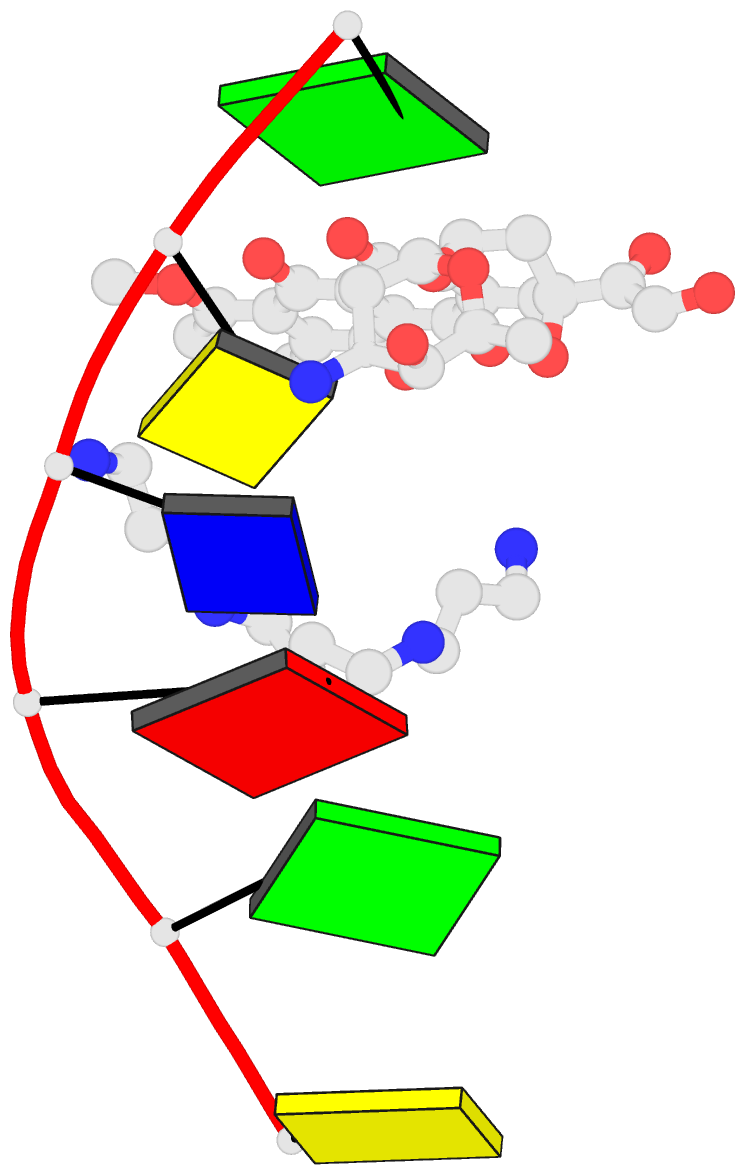Summary information and primary citation
- PDB-id
- 1d12; DSSR-derived features in text and JSON formats
- Class
- DNA
- Method
- X-ray (1.7 Å)
- Summary
- Structural comparison of anticancer drug-DNA complexes. adriamycin and daunomycin
- Reference
- Frederick CA, Williams LD, Ughetto G, van der Marel GA, van Boom JH, Rich A, Wang AH (1990): "Structural comparison of anticancer drug-DNA complexes: adriamycin and daunomycin." Biochemistry, 29, 2538-2549. doi: 10.1021/bi00462a016.
- Abstract
- The anticancer drugs adriamycin and daunomycin have each been crystallized with the DNA sequence d(CGATCG) and the three-dimensional structures of the complexes solved at 1.7- and 1.5-A resolution, respectively. These antitumor drugs have significantly different clinical properties, yet they differ chemically by only the additional hydroxyl at C14 of adriamycin. In these complexes the chromophore is intercalated at the CpG steps at either end of the DNA helix with the amino sugar extended into the minor groove. Solution of the structure of daunomycin bound to d(CGATCG) has made it possible to compare it with the previously reported structure of daunomycin bound to d(CGTACG). Although the two daunomycin complexes are similar, there is an interesting sequence dependence of the binding of the amino sugar to the A-T base pair outside the intercalation site. The complex of daunomycin with d(CGATCG) has tighter binding than the complex with d(CGTACG), leading us to infer a sequence preference in the binding of this anthracycline drug. The structures of daunomycin and adriamycin with d(CGATCG) are very similar. However, there are additional solvent interactions with the adriamycin C14 hydroxyl linking it to the DNA. Surprisingly, under the influence of the altered solvation, there is considerable difference in the conformation of spermine in these two complexes. The observed changes in the overall structures of the ternary complexes amplify the small chemical differences between these two antibiotics and provide a possible explanation for the significantly different clinical activities of these important drugs.





